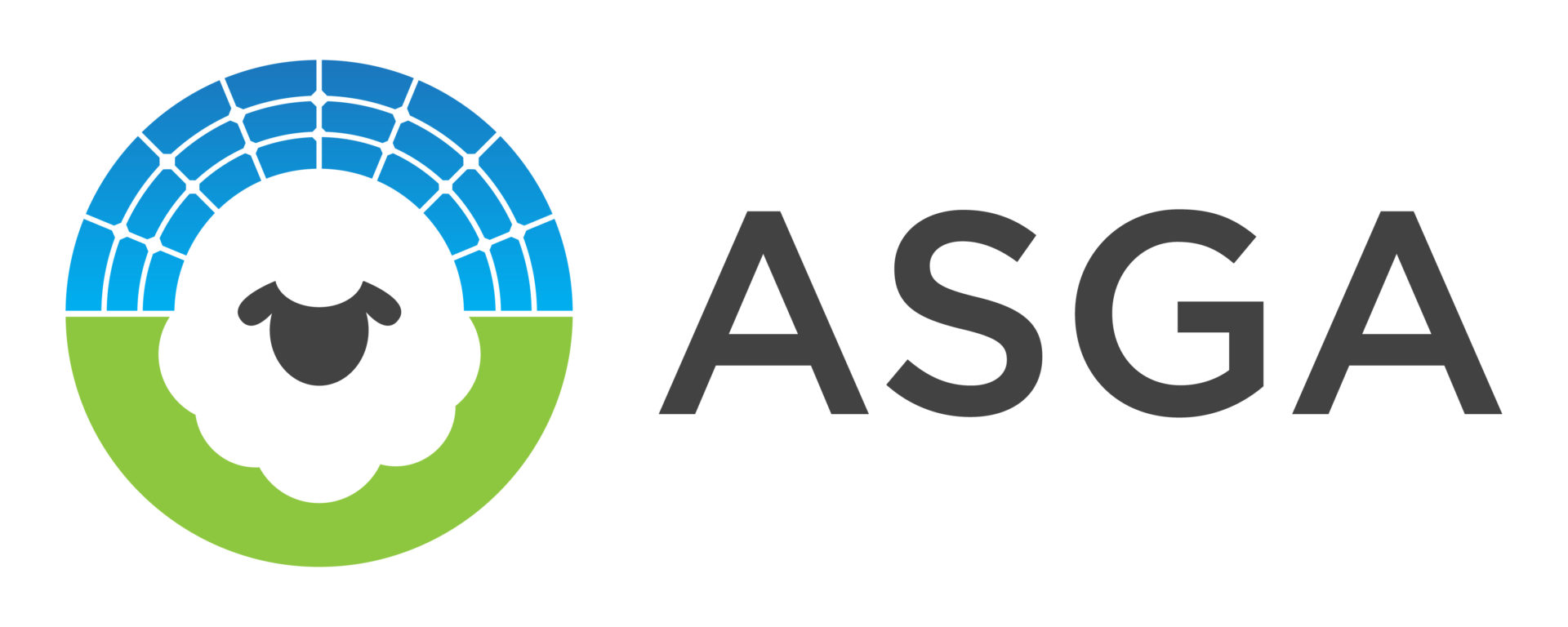Ask a Vet: Sheep Identification for Solar Grazers
from ASGA Call 16, April 3 2019. With Dr Judy St Leger, Dutch Barn Farm
Sheep used for grazing solar fields should be individually identified. Shepherds should keep records of the sheep delivered and removed to prevent concerns of lost animals. Ear tags come in many different sizes, designs, and brands. There are brass, aluminum, and plastic tags; button tags, rotary tags, swivel tags, and looping tags; DNA tags, and RFID (electronic tags). Because rapid and accurate identification is important, plastic tags with easily readable numbers are preferred for permanent tagging. Because sheep generally will move across county lines for installations, the simplest and best IDs today are custom manufactured scrapie tags.
Producers are required to follow Federal and State regulations for officially identifying their sheep. Premier 1 offers approved tags in several styles and colors as shown below. Color is up to you (except blue, which is reserved for USDA use) and can be varied annually for a simple indicator of a ewe’s birth year. All official National Scrapie Eradication Program identification tags have the U.S. shield printed on them and they indicate the identification of the producer. To get a premise identification number producers can call toll-free 1-866-873-2824. Sheep contained by electronet will not get them caught in netting or wires. However, some feeders (especially livestock panel-based feeders) may be associated with tags becoming ripped out.
Tags can (and do) occasionally come out. For this reason, regularly observing sheep for tags is indicated when on the solar facility. Replacing tags is better accomplished by creating a new hole in the ear. Reusing the old hole is not as good for tag placement.
A national system for animal identification will likely be rolled out in 2020. Its purpose is to trace movements of animals, in the event of a disease outbreak or act of bioterrorism. At that time, identification will likely be an ear tag that is cross-linked with the scrapie eradication program.
Considerations for permanent ear tagging
- Needed for individual animal ID
- Should be readable without catching the sheep
- Annually varying colors can be a way to quickly identify the age of a ewe
- Can be personalized so that the sheep is immediately identified as to its home farm
- Adding scrapie requirements (shield and flock ID) makes one tag serve multiple purposes
- Small tags can be placed in ears of young lambs greater than 2 weeks without concern
- Consistently tagging in the RIGHT ear means that animals can be scanned from one side only
Marking newborn lambs
Many producers choose to mark newborn lambs to indicate the dam and track information such as date of birth, sex, and any individual health issues. There are a number of ways to accomplish this:
- Brass tags – these tags will stay in the ear for many years if properly placed. They are inexpensive (less than $0.20/lamb). However, reading them requires catching the lamb. These are an excellent tag to place at birth with a follow-up plastic tag later in life.
- Marking paint or crayons
- OR
- for those lambing on fields, quick and simple marking of dams and lambs can be accomplished using marking paint or crayons. Some producers use the same number for dams and lambs, some use symbols or cryptic marks to identify which animals belong to which. This system makes identifying dams and lambs easier than tags but has the disadvantage of impermanence. The marks will fade/wash with time and a permanent tagging system should be utilized before the marks disappear. Marks from marking crayons will usually last for several weeks, whereas paint brands tend to last for many months.
